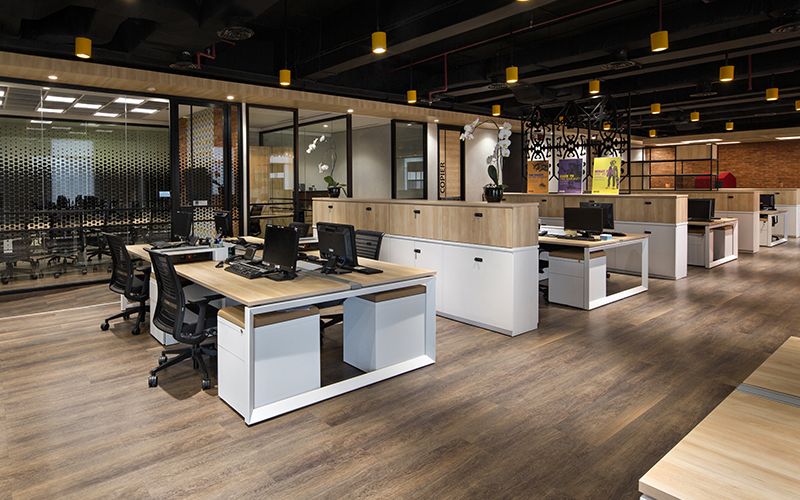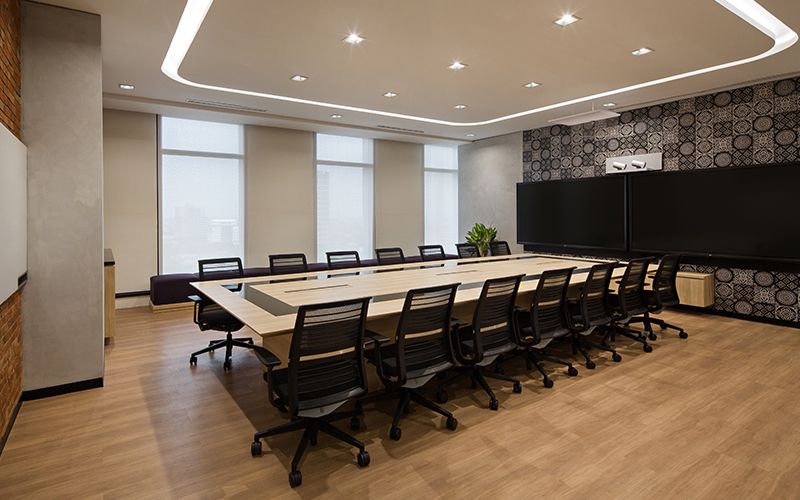Daimler, parent company of Mercedes-Benz, is one of the largest manufacturers of premium cars – and the largest manufacturer of commercial vehicles – in the world. Its Mercedes-Benz C-, E- and S-Class cars and SUVs are manufactured in Indonesia at its factory in Wanaherang, one of only a handful of car plants outside Germany.
The Daimler Group has plans to produce more than 130 electric car variants in the coming years and to develop electric buses, lorries and vans. The Mercedes EQC, launched in 2018, is its first fully electric vehicle – which can be ordered with seat covers made from recycled water bottles. Worldwide, Daimler has used over 70,000 square metres of roof space for solar panels, and by 2022 all Mercedes-Benz car plants in Germany will be powered by energy from renewable sources.
For its Jakarta operations, Daimler (Daimler Commercial Vehicles Indonesia) and Mercedes-Benz (PT Mercedes-Benz Distribution Indonesia) decided to move its various offices from the busy centre of the city to one large office space at the CIBIS Nine Building, part of a new business park surrounded by green space on the southern edge of the city. They chose local interior design consultants Morphosa to oversee the project.
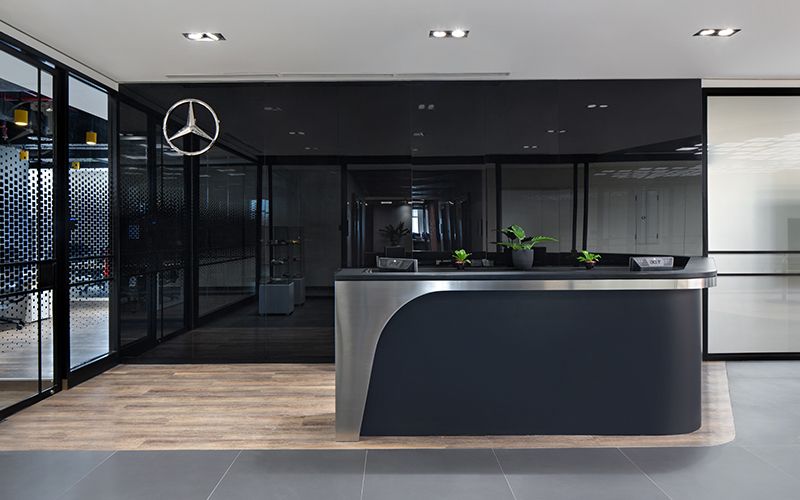
Like all Mercedes showrooms across Indonesia, the reception area boasts dark, sophisticated tones that integrate seamlessly with a sleek wooden look – here created with Textured Woodgrains luxury vinyl tiles from our Level Set collection.
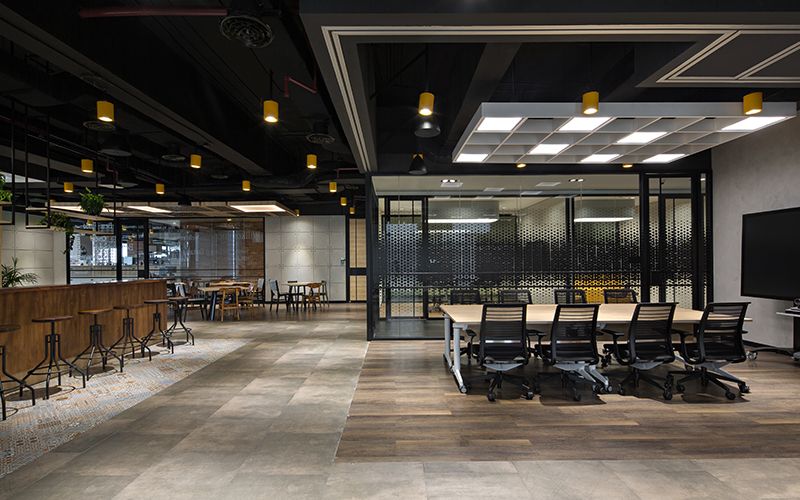
At the breakout area, cafeteria-style seating and bar stools lend to a comfortable, homey atmosphere. Pictured: Textured Woodgrains luxury vinyl tiles in Ash Walnut colourway.
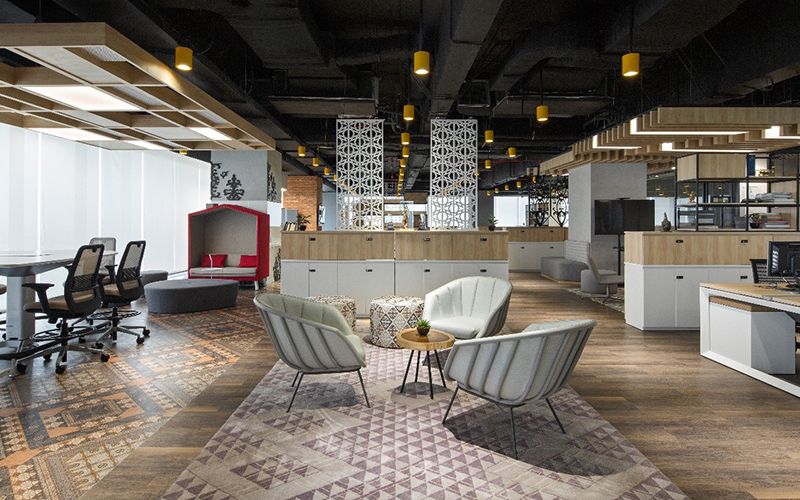
Morphosa has created a collaborative workspace for Daimler and Mercedes-Benz featuring open desks, height table desk and intimate discussion areas. The flooring adds a beautiful touch – traditional Indonesian batik tiles integrate perfectly with Natural Woodgrains luxury vinyl tiles from our Level Set collection.
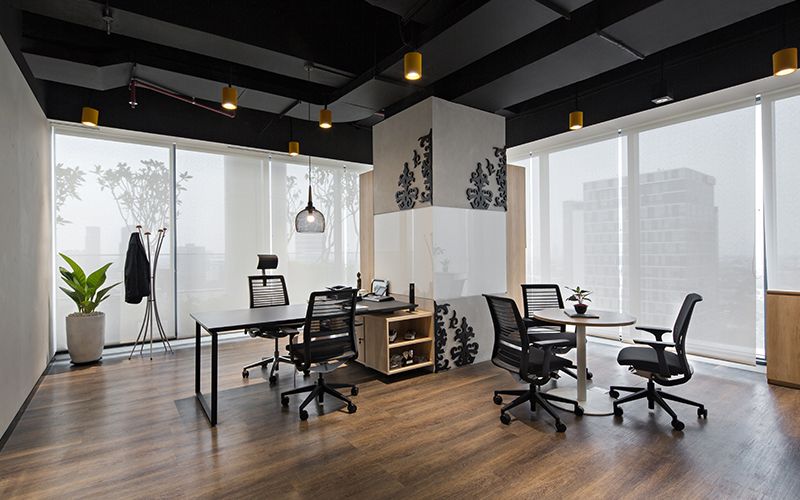
Our Level Set luxury vinyl tiles, boasting superior sound reduction, virtually zero VOCs and impressive durability, help to create the perfect meeting space.
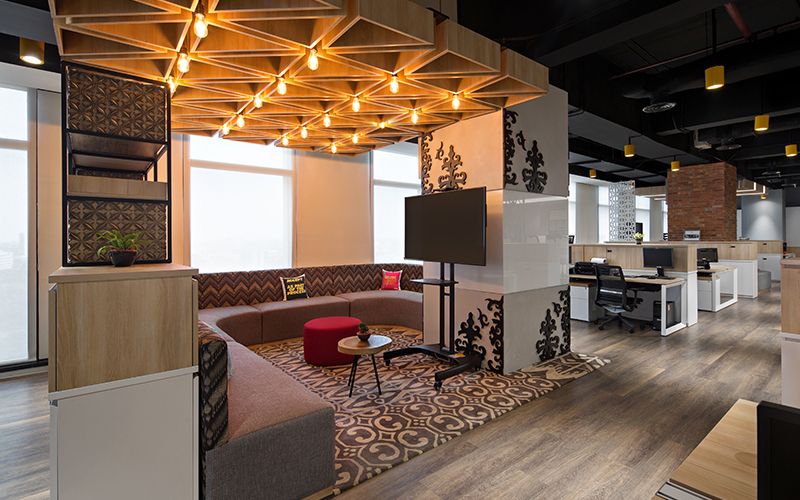
Traditional Indonesian batik patterns add local flair to a world-class office
Okky Wardhana, Morphosa’s managing director, believes interior designers have a responsibility to make decisions that will help to combat climate change. “I use local green materials such as rattan and straw in my designs as much as I can,” he tells us. “We specify materials with high recycled content and low carbon footprints.”
Daimler Group has a worldwide initiative to go paper free by digitising its design and production processes – no small undertaking for a business that has relied on A1-size technical drawings for its vehicle components for decades. This is something that Okky feels passionate about: “We always encourage our clients to go paperless. As well as helping the environment, it also reduces the need for filing cabinets, so there’s more usable space for other things like collaborative space or a bigger pantry.”
Morphosa decided to use luxury vinyl tiles throughout Daimler’s new offices – a choice that, in the past, would have been costly for the environment. Historically, LVT has not been the most sustainable flooring option – but just as we disrupted and elevated the carpet tile industry with our Mission Zero work, we are making LVT more sustainable. Our LVT products are 100% recyclable through our ReEntry® recycling initiative, and they’re free of ortho-phthalate plasticisers, heavy metal ingredients, added formaldehyde and any other ingredients that could contaminate our recycling system.
All Interface products, including LVT, are third-party certified across the entire product life cycle as Carbon Neutral Floors™. To meet the goal that we set in 1994 to eliminate any harm we may do to the environment by 2020, we have worked tirelessly to redesign our products and processes, and as a result we have reduced our products’ carbon footprint by more than 60% compared to a 1996 baseline. And by offsetting the remaining footprint on behalf of our customers, we’ve now made all our flooring is carbon neutral as a standard – and we are the first global manufacturer to guarantee this. By installing Interface LVT, Daimler has helped to prevent 69 tonnes of carbon emissions from going into the atmosphere – the equivalent emissions from a car travelling 271,654 kilometres or seven times around the circumference of the earth.
As a German manufacturer, Daimler insists on the use of high-quality products in its offices around the world. This is true for everything, from the workstations to the lighting and the floor coverings. Morphosa’s designers have worked with Interface on a number of interiors, so they are familiar with our products. Okky loves the wide range of materials and finishes, the high-quality design, and the service that comes with it.
As Daimler has a long history in Indonesia and has been part of the country’s growth since the 1970s, the design team chose to highlight this connection with Indonesian culture using the theme of “home”. To fit this concept, Okky wanted a floor covering that “doesn’t look or feel like an office,” so a wood-grain patterned LVT from the Level Set collection was selected. Traditional Indonesian batik tiles and carvings were used to add a local touch to the interior design.
Morphosa has created a space that helps Daimler’s employees to feel at home, with a large open pantry that mixes natural patterns, materials and colours. The floor plan is designed to encourage people to move around and be more active by using different informal and formal collaborative spaces. Staff can easily switch between sofas, work desks, and high tables.
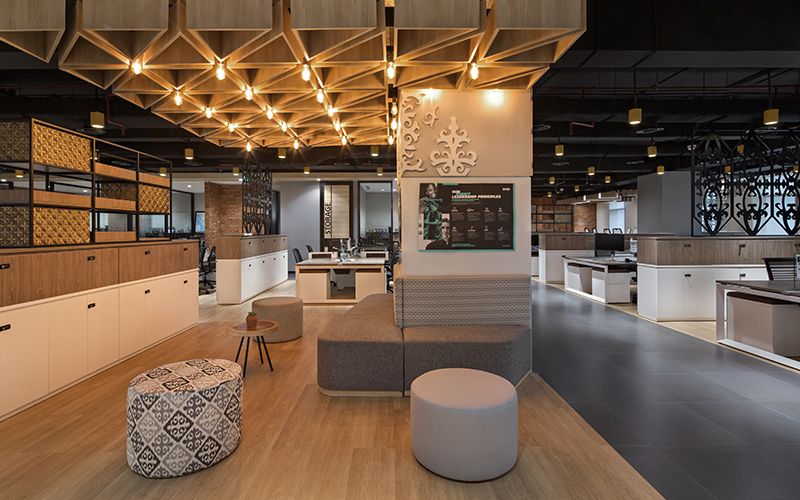
Daimler and Mercedes-Benz’s large open-plan pantry is softened by pillars, cabinets, ornate grating and dropped suspended ceilings, helping employees feel at home. Pictured: Natural Woodgrains luxury vinyl tiles in Cedar colourway.
Daimler’s previous premises were traditional closed offices, so it was a big transition for the management team to make the shift to an open-plan office. Even Daimler’s CEO doesn’t have his own office in the new space, so it was a challenge to get the client to commit to this new way of working. “It’s completely different to what they are used to,” Okky explained, “but with an open-plan office, employees and their managers are closer together, communication is easier and decisions are made more quickly.”
Okky loves to see his clients smile when his team unveil their latest design, but he also wants to get their feedback after they’ve had a chance to settle in and get to work: “Now they really like how different it is from their old office space, how its open and modern yet homely, with an authentic local touch.”

